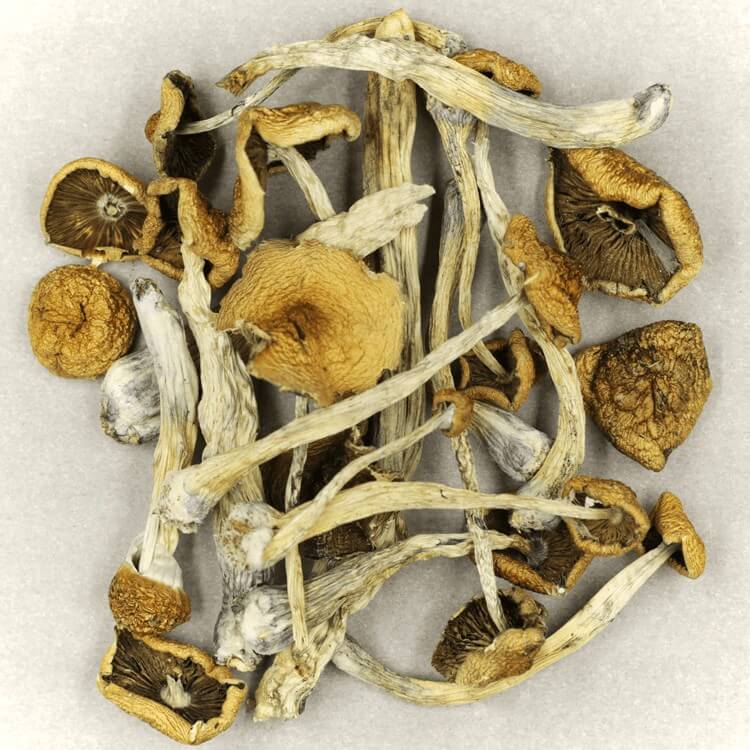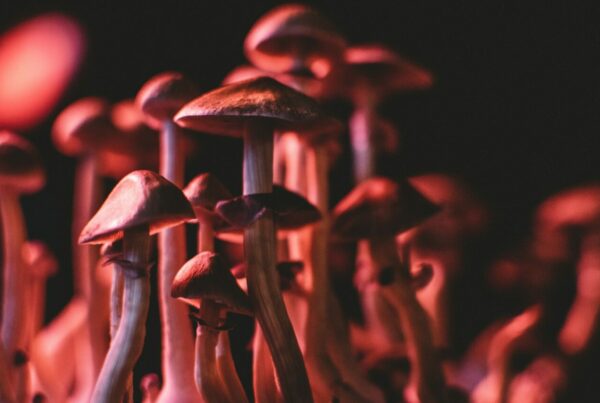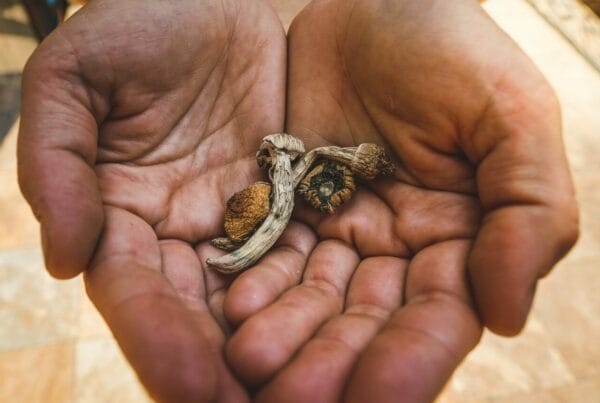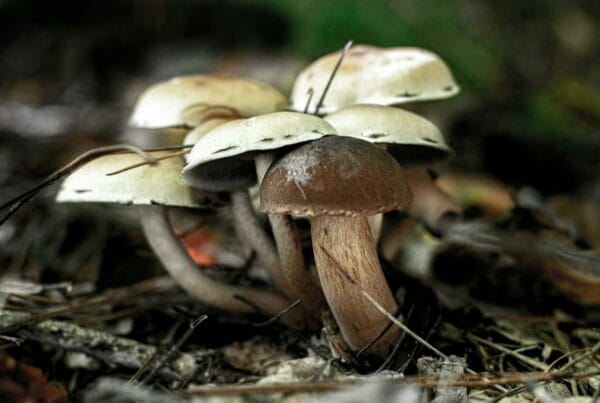Once thought to be mythical, the strength of Psilocybe mexicana is now accepted as reality due to extensive psilocybin research. The exploration of its therapeutic potential has led to a gradual acceptance within the medical community. The exciting progress in this field motivates experts to establish safe dosage guidelines for medical applications.
Key Takeaways
- Researchers are using advanced techniques such as liquid chromatography and tandem mass spectrometry to measure mushroom potency.
- Psilocybe Mexicana, along with other mushroom species, is subjected to clinical trials to evaluate its therapeutic potential.
- Understanding genetic diversity in magic mushrooms is crucial for developing an accurate dosage guide.
Psychedelic Mushrooms: Journey from Mystery to Scientific Discoveries
In the past, only a few health conditions were known to benefit from Psilocybe Cubensis. However, psilocybin is now making remarkable progress in revealing its potential medicinal properties.
Experts are harnessing the potential of Psilocybe Mexicana and other potent strains for extensive research and clinical trials. Whether the studies are in vivo or in vitro, this strain has proven effective in displaying the true effects and benefits of this fungal species.
The Emergence of Psychedelics in the Market
From obscurity to spotlight—ongoing advancements and breakthroughs are gaining public attention, especially among those seeking therapeutic alternatives. Traditional mental health treatments often don’t suffice, prompting people to search for more effective solutions.
The solution? Magic mushrooms.
People battling mental health issues are increasingly turning to psilocybin, which has demonstrated potential in addressing depression, alcohol addiction, anxiety, compulsions, tics, chronic pain, among others.
Currently, medical professionals are exploring novel ways to accurately determine the optimal dosage for safe patient administration. Notably, a research team from the University of Texas has devised a model to extract psilocybin and psilocin concentrations.
The potency of magic mushrooms can indeed be clinically quantified.
The Distinctive Attributes of Mexicana
Golden Teachers, Blue Meanies, and B-Plus are among the magic mushroom species that have undergone extensive research. However, to enhance our knowledge of safe magic mushroom consumption, it’s vital to investigate other species as well.
The Mexicana species has garnered attention in the research community not only because it’s one of the oldest known species, but also due to its comparatively low potency, which potentially aligns better with medical drug standards.
Although the potency of this Mexican species isn’t as high as that of other strains, it can still deliver effects similar to those of the more mainstream strains. As microdosing gains popularity among patients, this strain emerges as an excellent option.
It boasts consistent levels of psilocybin and psilocin, much like other strains. So why opt for this over similar strains? Its historical and anthropological significance provides the explanation.
Delving into the Rich History of “Mexican” Mushrooms
In ancient times, psilocybe mexicana grew naturally in moss. These psilocybin mushrooms were held in high esteem by the indigenous people for their varied applications, often linked with mystical or supernatural occurrences.
Let’s focus on Mexican mushrooms. The first documented use of these mushrooms dates back over 2000 years, by the native peoples of North and Central America. The Aztecs, an ancient civilization, referred to these mushrooms as the “food of the Gods,” or “teonanácatl” in their native tongue.
Were the Aztecs still around today, they would attest to the transformational, emotionally potent, and mentally balancing effects of the Mexicana—despite not comprehending these contemporary terms.
In spite of diverse cultivation methods, this mushroom has managed to retain its natural psilocybin levels, thereby confirming its authenticity. This genuine nature is a well-recognized standard that is highly valued by researchers and psychedelic research institutions.
Innovative Methods for Testing Psilocybin Content and Potency
A team of ten researchers from the University of Texas at Arlington and other research institutions has devised a novel method for testing the potency of psychoactive compounds in mushrooms. This fresh approach combines liquid chromatography and tandem mass spectrometry.
Let’s look at two cutting-edge techniques:
- Liquid chromatography is a technique that separates and analyses various chemicals in a mixture. It is utilized for identifying active chemicals in mushrooms. The method involves passing a liquid sample through a column filled with a solid substance (the stationary phase). The differing chemical interactions with the stationary and mobile phases cause the chemicals to separate at different rates as they travel through the column.
- Spectrometry is primarily concerned with the interaction between matter and electromagnetic radiation across a range of wavelengths. It identifies and measures substances according to the specific wavelengths of light absorbed and scattered by molecules. This enables the determination of the electronic, vibrational, and rotational states of the chemical.
This method was used to analyze five strains of magic mushrooms. The researchers found that the average total levels of psilocybin and psilocin across these strains ranged from 0.879 to 1.36. These concentrations exceeded those found in many other strains, like Bull Run and Cambodian. The accuracy of this study was validated by comparing the results with data from other independent laboratories.
The concurrence of findings between the two laboratories further confirmed the reliability of the testing sequence in accurately determining the potency of the mushrooms.
If confirmed by experts, this could bring forth new techniques to the existing psychedelic potency testing methods, serving as an added safety measure to prevent inaccurate dosage determinations.
Expanding Research to Other Species
Conducting research on other species is advantageous. It can improve our understanding of the health benefits associated with different strains and provide essential data on the effects of less potent mushrooms.
Furthermore, it can help educate individuals on the effects of different dosages on the psychedelic experience. By comparing Mexican mushrooms with more potent strains like Psilocybe Cubensis, researchers can understand how different concentrations of active compounds can affect therapeutic results.
For example, the Blue Meanies strain produces stronger hallucinogenic effects, which could be potentially effective in treating conditions like depression. Alternatively, strains with less potency are more suitable for microdosing or for milder applications like mood enhancement or attention improvement.
Genetic Diversity Enhances Treatment Safety
It is not widely known that different cultivars or types have unique genetic profiles and
It’s important to understand that hallucinogenic mushrooms differ greatly in their potency, chemical composition, and effects. This diversity allows medical practitioners to select the best suited type for specific therapeutic uses and tailor doses to individual requirements, thereby reducing risks and enhancing benefits.
Take for instance, Psilocybe Semilanceata (Liberty Caps) or Psilocybe cyanescens. These possess unique alkaloid profiles that could be particularly effective for anxiety treatment. On the other hand, certain synthetically cultivated mushrooms may be better equipped for addressing substance abuse or compulsive behaviors. This variety aids in devising personalized treatments that are safer and more effective.
Thus, it’s clear that the genetic diversity in hallucinogenic mushrooms, coupled with modern techniques of potency evaluation and identification, is key to developing safer medical therapies.
Enhanced Safety in Medical Applications
Let’s contemplate the potential benefits of safer dosage practices.
- Decreased risk of overdose: Accurate dosing eliminates concerns about overdosing. It also signifies the need for clearer product labeling to avoid consumer misunderstanding.
- Increased predictability: Accurate dosing allows individuals to better anticipate the experiences they may encounter, reducing overwhelming sensations and anxiety, and thereby increasing patient satisfaction.
- Standardized measurement: Accurate dosing could establish a standardized metric, enabling people to easily reference charts for potential effects.
Experience the Advantages of Precise Dosage with Potency Tests | Order Magic Mushrooms Online at Psychedelic Canada
With the continued use of these cutting-edge techniques, unpredictable effects will be a thing of the past. Combine this with smart online shopping at Psychedelic Canada, where we offer dried mushrooms that provide a calm, relaxing psychedelic journey without excessive psychoactivity. Buy psychedelics online in Canada via Psychedelic Canada.
Frequently Asked Questions
Do Big Mexicans and Psilocybe Cubensis share similarities?
No, Big Mexicans and Psilocybe Cubensis are distinct strains of mushrooms, thus it’s crucial not to confuse them. Big Mexicans have a higher compound isolation, ranging from 0.5% to 1%, which makes them significantly more potent.
Psilocybe Cubensis differ from other mushrooms, not just in potency, but also in appearance: while the former often has a bell-shaped cap, the latter is usually conical.
What is the peak concentration in Mexican mushrooms?
The concentrations of both psilocybin and psilocin in Mexican mushrooms can reach a maximum of 0.25%. While these levels are comparable to those found in the Golden Teacher strain and seem fairly low, they are potent enough to induce powerful psychedelic experiences that may have potential health benefits.
What dosage is considered medically safe?
The standard dosage generally falls between 1 to 2 grams, although this can vary based on factors such as the method of consumption, the individual’s metabolism, and the specific potency of the mushroom strain. Some people opt to take smaller doses ranging from 0.05 (50mg) to 0.025 grams (250mg) in order to mitigate the hallucinogenic effects.





